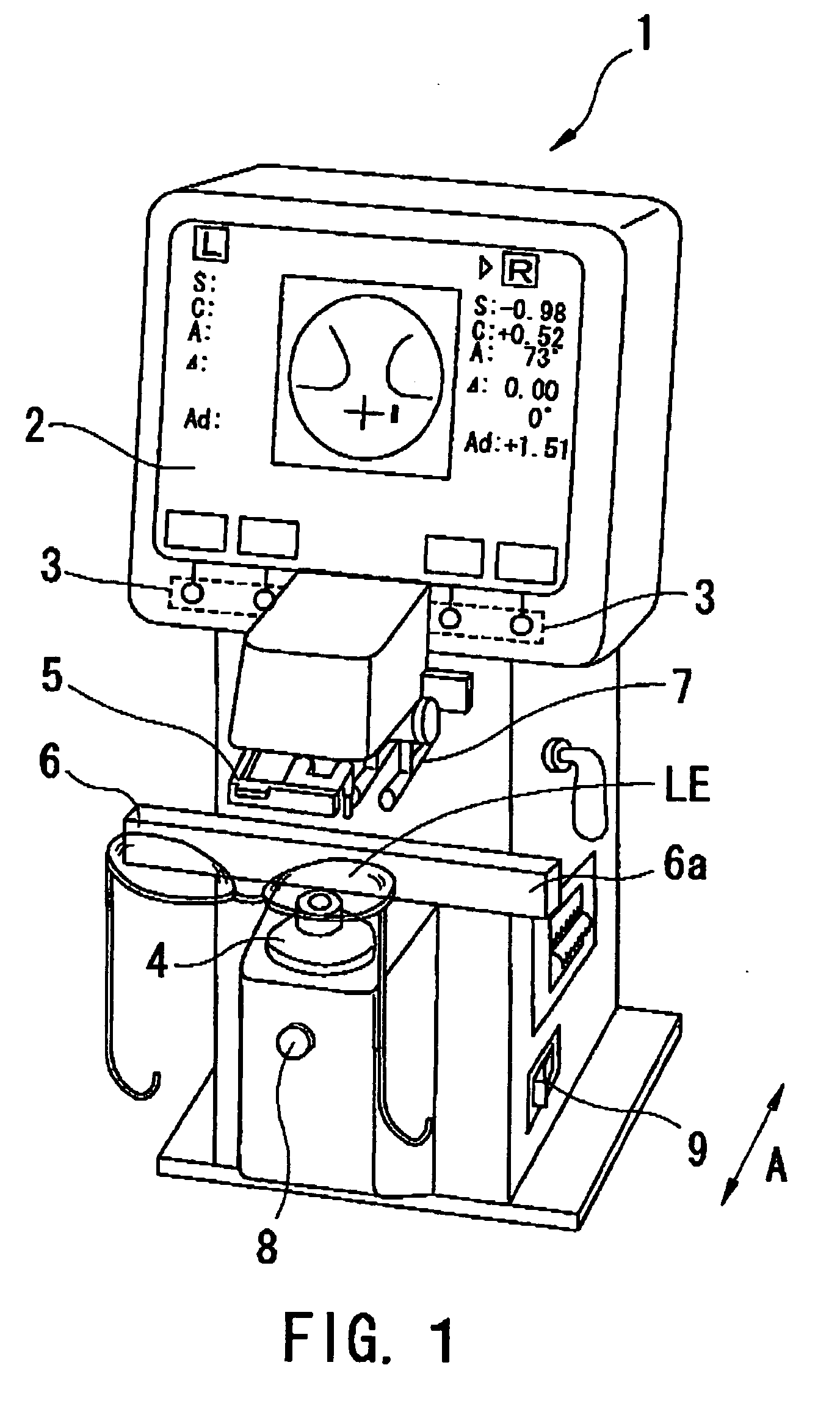Lens meter
a technology of lens meter and meter, which is applied in the direction of measuring devices, instruments, structural/machine measurement, etc., can solve the problems of not easily available and expensive, measurement target images that cannot be referenced by diopters, and short measurement target images, etc., to achieve the effect of easily and efficiently measuring even progressive lenses and the lik
- Summary
- Abstract
- Description
- Claims
- Application Information
AI Technical Summary
Benefits of technology
Problems solved by technology
Method used
Image
Examples
Embodiment Construction
[0016] A detailed description of one preferred embodiment of a lens meter embodied by the present invention is provided below with reference to the accompanying drawings. FIG. 1 is a view showing a schematic external view of a lens meter consistent with the preferred embodiment of the present invention.
[0017] On a display 2 such as a liquid crystal display arranged on the top of a body 1 of the lens meter, information necessary for measurement such as a mark for alignment, measurement results, and the like are displayed. Further, at the press of one of switches 3 corresponding to switch displays on the display 2, necessary instructions such as measurement mode switching are inputted.
[0018] A lens LE to be measured is mounted on a nosepiece (lens rest) 4, and a lens holder 5 is moved downward (to a nosepiece 4 side) to stably hold the lens LE mounted on the nosepiece 4.
[0019] When measuring the lens LE in frames, a frame table (lens table) 6 is brought into contact with the lower ...
PUM
 Login to View More
Login to View More Abstract
Description
Claims
Application Information
 Login to View More
Login to View More - R&D
- Intellectual Property
- Life Sciences
- Materials
- Tech Scout
- Unparalleled Data Quality
- Higher Quality Content
- 60% Fewer Hallucinations
Browse by: Latest US Patents, China's latest patents, Technical Efficacy Thesaurus, Application Domain, Technology Topic, Popular Technical Reports.
© 2025 PatSnap. All rights reserved.Legal|Privacy policy|Modern Slavery Act Transparency Statement|Sitemap|About US| Contact US: help@patsnap.com



